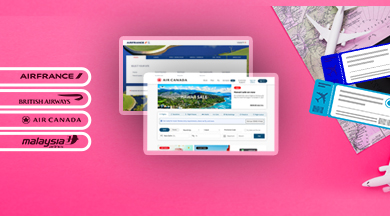Success Story – Our Airfare Data Scraping Services from OTAs (Online Travel Agencies) Has Helped an Airline Giant in Improving Their Service Quality
Case Informations
Our culture nurtures strives achieve innovation expertise focused enhance entrepreneur environment
- Practice : Domestic Violence
- Time : 3 Months
- Lawyer : Christine Judge
- Location : X-Byte House, Near Shantmani Apartment, Bodakdev, Ahmedabad - 380054, India

Business Challenge
Working with a highly dynamic data-demanding airline industry suggests a considerable possibility of human errors anytime. According to the degree of price liability, the client wanted to devise a data-based pricing optimization system to price flight tickets. Additionally, he wanted to keep his focus on margin improvement. The objective was to study market dynamics with access to well-structured flight data like arrival and departure times, gate details, pricing, flight numbers, and more from multiple airline sites or travel agencies worldwide.
Some challenges encountered by the customer include:
Market Losses : This client hoped to get a competitive pricing elasticity study model to prevent market share loss to the opponents.
Dynamic Pricing : Using airline pricing data, the customer wanted to take advantage of the dynamic price strategies to improve profits without obstructing the brand’s image
With complex decisions about flight ticket prices made by both historical and real-time data sets, these internal airline data extracting tools were not precise enough to assist them in driving margins. Therefore, the customer approached X-Byte Enterprise Crawling to leverage its airline web scraping solutions for better outcomes.
X-byte Enterprise Crawling’s Airline Data Mining Solutions
The committed team of professionals at X-Byte used a three-pronged methodology to solve the client’s present challenges. In this initial stage, our team collected the requirements for the customer’s project. During the subsequent phase, our web scrapers set the infrastructure for collecting data and structure depending on the customer’s requirements. Ultimately, we delivered airline data within the required format and preferred frequency.
We scrapped all the major data factors like trip names or IDs, trip day, Plane name, arrival & departure airport, flight prices, place code, arrival and departure time, full stops, check-in & check-out, flight pricing monitoring, and sightseeing. The source sites that the client needed to extract included companies like Aeroflot, American Airlines, Air Canada, Air India, Air France, Air Mauritius, British Airways, Alaska Airlines, Emirates, Cathay Pacific, Gulf Air, Continental Airlines, Jet Air Emirates, Indian Airlines, Kuwait Airways, Kenya Airways, Malaysia Airlines, Lufthansa, Singapore Airlines, Qantas Airways, United Airlines, Qatar Airways, and Virgin Atlantic.
We have set the whole data pipeline where the data got automatically provided to the customer using our Airline Travel Data API. X-Byte Enterprise Crawling has made a dedicated team work exclusively on the project to offer the most refined data. Our expert team regularly communicated with the customer to discuss KPIs, roadblocks, and new projects to ensure that their data scraping system works perfectly with the business objectives.
Business Outcomes
X-Byte Enterprise Crawling’s airline data scraping solutions have helped customers scrape different airlines’ pricing using online traveling platforms. The pricing data helped the customer analyze prices against general market prices and design recommendations to fine-tune them per their competitors’ price strategies.
By extracting data from consumer feedback forums and social media sites, we assisted the customer in learning about clients’ general sentiments about the products and services. Additionally, this data assisted them in designing operational marketing strategies that target customers per their preferences and improve products and services to fulfill their demands.
Airline data mining services by X-Byte Enterprise Crawling delivered the data per the client’s requirements about travel bookings and airline tickets.
Our airfare data scraping knowledge helped the customer keep track of all the price changes in the airline tickets because they constantly fluctuate according to factors like touristic or non-touristic seasons, holidays, weather, the situation of a destination country, etc.
Within one year, the customer was able to improve customer happiness by 2X through optimizing the pricing strategy, which helped improve their profit margins by 17%.
World leaders in the E-commerce industry are using X-Byte Enterprise Crawling to crawl E-commerce websites and get high-quality data. Always lead the market with our data scraping services!





